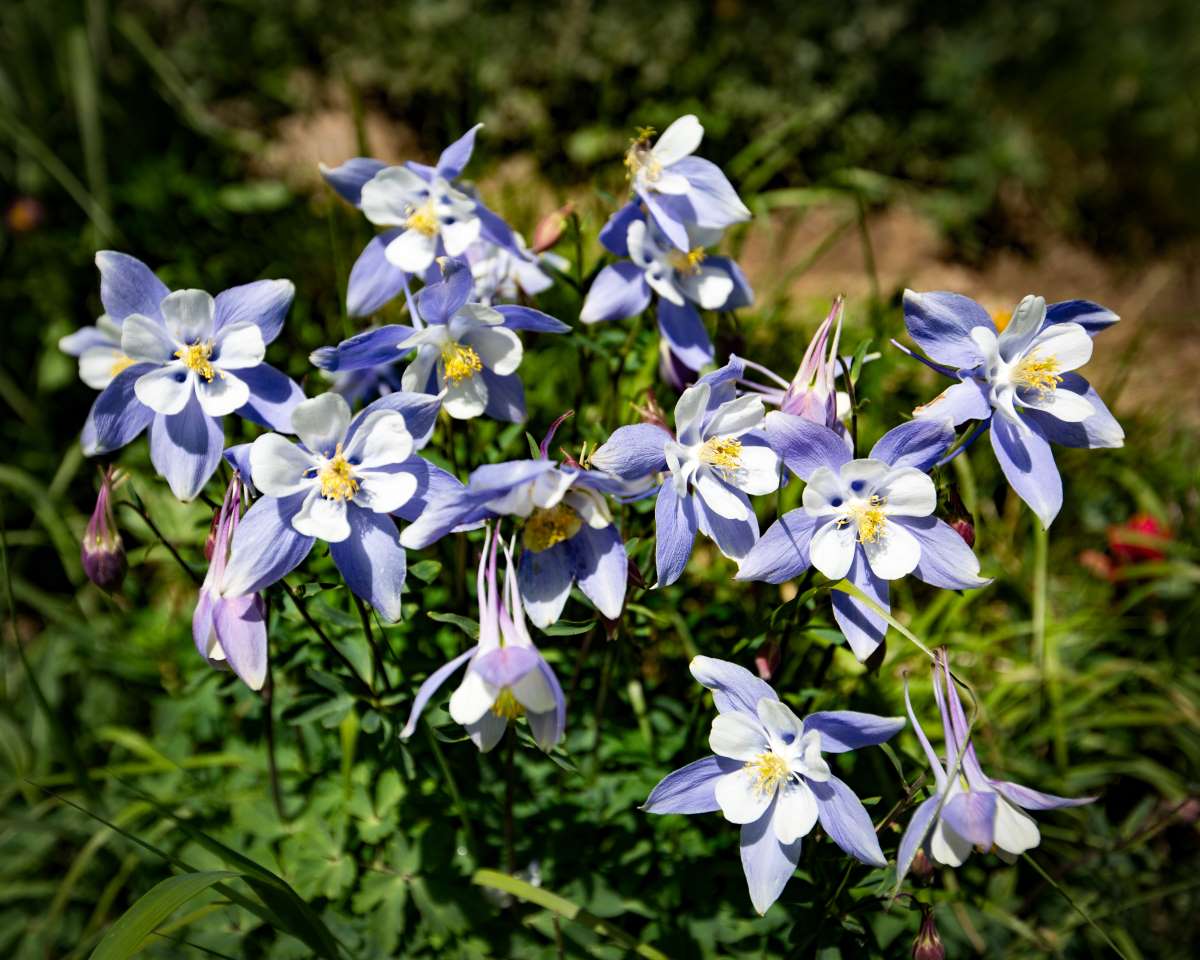Description
Aquilegia – Columbine
There are around 70 species of graceful clump forming perennials, in this genus. They occur from meadows, open woodlands, and mountainous areas in Europe, North America, and temperate regions of Asia. Columbine comes from the Latin word for dove, as the flowers were thought to resemble a cluster of doves. They produce basal rosettes of long stalked deeply 3-lobed or ternate to 3 ternate often blue-green or blue-gray fern like leaves the leaflets are mostly egg shape or rounded wedge shaped at the bases often shallowly or deeply divided into 2 or 3 lobes. In late spring and early summer distinctively spurred bell shaped flowers usually 1-4” long with colorful tepals and spurred petals are carried singly or in short panicles on branching leafy stems.
These frost hardy plants prefer moist but well-drained light soil enriched with manure in full sun or partial shade. Grow alpine species in gritty, humus-rich, and moist but sharply drained soil in full sun. Protect from strong winds and in hot areas provide some shade.
Contact with sap may irritate skin. Some used as cut flowers or in rock gardens.
Prone to powdery mildew, rust in dry summers, fungal leaf spots, Ascochyta and Septoria, Southern blight, aphids, leaf miners, and damage from caterpillars.
Aquilegia caerulea – Rocky Mountain Columbine – Blue Columbine –This species has be declared Colorado’s state flower and is found from Southwestern Montana to Northern Arizona and Northern New Mexico and grows to 24” tall and 12” wide. This upright short lived perennial produces 2 ternate mid green leaves with deeply lobed leaflets ½-1 ¼” long leaves with hairy undersides. From late spring to midsummer terminal leafy racemes of upright powdery blue and white flowers are produced with slender spurs 2” long. It sometimes produces a few blooms in fall. It prefers rich soil.
Zones 4-8





